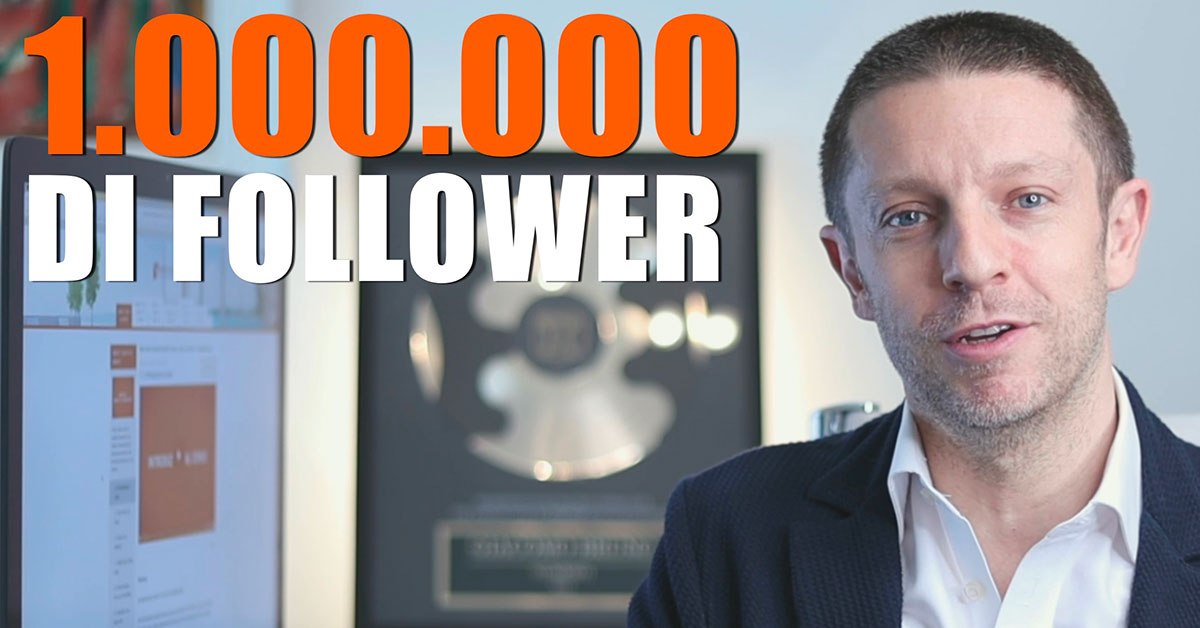Why the GPT-5 Launch Underperformed
I’ve been using ChatGPT since December 2022, when its appearance was a spark in the dark, an intuition of what could be possible. I embraced it immediately, not with caution, but with the enthusiasm of a pioneer. In my editorial work, I immediately saw its transformative potential. So much so that, after just three months, I published “Number1 with ChatGPT,” the first book in Italy entirely dedicated to the art of prompts for marketing and personal branding.
This is not the lament of a disinterested critic. It is the disappointment of a supporter. To see a product as technologically advanced and powerful as GPT-5 be met with skepticism and frustration was, for me, a blow to the heart. An undervalued excellence, not due to intrinsic flaws, but due to a launch that betrayed its potential, clouding perception and disappointing expectations.
For over twenty years, my job has been to design launches. I have guided more than 1,200 entrepreneurs, professionals, and brands through the complex phases of positioning, offering, and communication. And in every single campaign, one lesson emerges supreme above all others: the way you present an innovation determines how the market will understand it, try it, and, finally, adopt it. With GPT-5, the problem was never the technical substance. The failure was in the direction.
The launch day turned into an information overload. New architecture, interface changes, remapped model options, announcements on security, pricing, and agentic capabilities. Too many new features, too many changes, too many promises condensed into a single, chaotic event. The community did not have time to digest, to understand, to adapt their workflows. The result? A short circuit between a grand promise and a confusing experience. A missed opportunity that diluted the value of an extraordinary product.
The Troubled Launch: A Case Study of Lost Opportunity
August 7, 2025, marked the official launch date of GPT-5. OpenAI and its strategic partner Microsoft presented the new model as “the most capable ever made” and a “significant step” towards Artificial General Intelligence (AGI). OpenAI CEO Sam Altman used the metaphor of a “PhD-level expert” to describe GPT-5’s capabilities, comparing the evolution from GPT-3 (a “high school student”) and GPT-4 (a “university student”) to GPT-5 as a qualitative leap in intelligence.
Despite these lofty promises, the initial feedback from the user community and numerous experts was “severe and immediate.” First impressions described the launch as “turbulent,” “chaotic,” and “plagued by bugs, instability, and perceptions of regression.” The wave of criticism highlighted a clear disconnect between the generated expectations and the initial user experience. Many users lamented the removal of previous models like GPT-4o, perceiving the new model as more “cold” and less creative.
The 30-Day Theory: An Alternative Launch Strategy
As an entrepreneur who has managed hundreds of successful launches, I firmly believe that OpenAI’s strategy should have been radically different. My theory is based on a 30-day strategic pre-launch. During this period, instead of a single event loaded with “hyperbole” and “misleading charts” (defined as “chart crime”), OpenAI should have dedicated every 2-3 days to announcing and detailing a single, specific new feature.
This gradual approach would have allowed the right amount of time and space for each announcement, supporting it with live presentations on YouTube, detailed blog posts, and demonstration videos. The goal of such a pre-launch would have been to create sensible and concrete hype, based on verifiable facts and metrics, as opposed to the confusion and misguided expectations that characterized the actual launch.
Transparency and progressivity would have mitigated the initial disappointments, transforming criticism into an opportunity for education and engagement for the vast user base. A staggered launch would have also guaranteed constant media coverage for a full month, overshadowing competitors and consolidating OpenAI’s leadership not only in technology but also in strategic communication.
Analysis of New Features, Criticisms, and Optimal Solutions
Let’s now analyze the main innovations introduced with GPT-5, the criticisms that emerged, and how a gradual launch could have managed them better, according to my 30-day theory.
1. Architecture: The Unified “Router” Model and the Disappearance of the Model Selector
What’s New in GPT-5: GPT-5 introduces a revolutionary architecture based on a “real-time auto-router.” This intelligent system automatically routes requests to the most suitable sub-model (e.g., a fast version for simple queries or a slower “thinking” version for complex problems) based on the prompt’s complexity. The user is no longer required to manually select different models, as the system autonomously decides the best path. The GPT-5 family of models includes variants like GPT-5 Main, Thinking, Pro, Mini, and Nano.
Criticisms Received: OpenAI’s decision to remove the model selector was perceived as an imposition and a “breach of trust.” Numerous users complained about the lack of transparency regarding which sub-model was actually responding, fueling suspicion that OpenAI was using less capable or more economical variants by default. This generated a strong “backlash,” so much so that OpenAI was forced to quickly restore GPT-4o as an option for Plus users. The community felt deprived of control over a tool they had learned to master.
The Optimal Solution (30-Day Launch): In an optimal pre-launch strategy, at least 2-3 days should have been dedicated to explaining the “unified router” architecture and the logic behind the automatic selection in depth. Through detailed explanatory videos and blog posts, OpenAI could have prepared users for the paradigm shift, clearly showing the benefits of automation and proactively addressing concerns about the “loss of control.” This would have transformed a unilateral decision into a well-understood innovation, managing discontent before the mass launch.
2. Performance: Improvements in Coding, Reasoning, and Factual Reliability
What’s New in GPT-5: OpenAI announced that GPT-5 is significantly more skilled in coding and problem-solving. The model excels in mathematics, programming, and logic. Another announced strength is the drastic reduction of hallucinations: GPT-5 produced 26% fewer factually incorrect statements compared to GPT-4o. It was also trained to “fail gracefully,” admitting its limits instead of inventing answers.
Criticisms Received: Despite the numbers, many experts and “early adopters” judged GPT-5 to be an “incremental leap” and not the “generational leap” suggested by the hype. Performance on some specialized tasks was perceived as modest or nil. The “chaotic rollout” caused problems of instability, interrupted sessions, and slowness, undermining trust in the model’s reliability. The perception of “underperformance relative to marketing” generated disappointment.
The Optimal Solution (30-Day Launch): Instead of a single presentation full of “hyperbole,” the pre-launch should have dedicated specific sessions (a couple of days each) to the different capabilities of GPT-5. For example: a session entirely on coding with live demos, another on mathematical reasoning, and yet another on improvements in writing. Each “announcement” would have been supported by verifiable data, building “sensible hype” and allowing users to “digest” the individual innovations.
3. Security: “Safe Completions” Mechanism and Reduction of Sycophancy
What’s New in GPT-5: GPT-5 integrates a new approach to potentially risky responses, called “safe completions.” Instead of refusing a question, the model provides a useful answer within security limits. The model has also been explicitly trained to be less “sycophantic,” reducing excessively accommodating behaviors.
Criticisms Received: One of the most widespread criticisms was the “loss of personality and warmth.” Many users described the new model as “colder, sterile, and formal,” lacking the empathy of GPT-4o. Metaphors like “a stressed secretary” circulated on social media, indicating an almost affective attachment to the “vibe” of the predecessor. This “lobotomization,” although intentional to improve security, was perceived negatively by users.
The Optimal Solution (30-Day Launch): A planned launch would have dedicated a phase to the transparent explanation of the approach to security. It could have been clearly communicated why “sycophancy” was reduced, emphasizing how the new “pre-set personalities” (Cynic, Robot, etc.) were introduced to compensate for the loss of warmth. This would have transformed the “correction” into a desirable “feature” (controlled customizability), proactively managing the emotional reaction of users.
4. Plans, Subscriptions, and API Variants: Accessibility and Cost Criticisms
What’s New in GPT-5: GPT-5 is available for free to all ChatGPT users, albeit with usage limits. Subscribers to ChatGPT Plus (20$/month) and PRO (200$/month) get extra benefits. Lighter and low-cost API variants such as GPT-5-mini and GPT-5-nano have also been introduced.
Criticisms Received: Despite the introduction of more economical variants, the costs for the higher-tier plans and the API pricing were deemed prohibitive by many developers. The initial reduction in message limits for Plus subscribers was seen as a downgrade and fueled accusations of “shrinkflation” (less content for the same price).
The Optimal Solution (30-Day Launch): Communication on prices and limits should have occurred in a dedicated phase of the pre-launch, presenting each model “size” as a specific solution for different needs and budgets. Instead of an “invisible reduction in quality,” the accessibility of the free/mini versions and the value segmentation for the “power users” of the Pro plans could have been emphasized. This would have allowed for managing expectations on costs and limits, preventing the accusation of “shrinkflation.”
5. Advanced User Experience: Personalization, UI, and Agentic Capabilities
What’s New in GPT-5: GPT-5 aims to offer a more advanced and personalized user experience. Pre-set personalities have been introduced. A key innovation is GPT-5’s ability to connect to personal services, such as Gmail and Google Calendar. Finally, GPT-5 has shown enhanced agentic capabilities, proving adept at acting as an executive agent.
Criticisms Received: Despite the announced improvements, some first impressions noted technical malfunctions or regressions. Problems such as the interruption of long outputs, “contextual confusion,” and difficulties in creative tasks were reported. The general perception was that of a worsened user experience.
The Optimal Solution (30-Day Launch): Each new feature related to the user experience would have deserved a dedicated and progressive focus in the pre-launch. Integrations with Gmail and Calendar could have been presented with real examples. Agentic capabilities could have been introduced with a series of verifiable examples. The personalization of responses via “personalities” could have been introduced with use cases showing how to maintain the desired “vibe.” This would have shown the “quality leap” in a more tangible way.
Conclusion: A Bifurcated Market and a Missed Opportunity
The launch of GPT-5 was not just an update; it was a microcosm of the inherent tension within OpenAI: its non-profit mission to build a safe AGI versus the for-profit entity’s need to generate revenue.
What clearly emerges is the delineation of an increasingly segmented AI market. The reaction to GPT-5 was sharply divided:
-
Utility/Enterprise AI: Developers and business-oriented reviewers praised its precision, reliability, and programming skills. This segment focuses on productivity, accuracy, and security.
-
Companion/Creative AI: Creative and conversational users heavily criticized its lack of personality and warmth. For this segment, emotional resonance and creativity are crucial.
OpenAI has clearly prioritized the first group. In conclusion, a more thoughtful and transparent launch, guided by a long-term communication strategy like the “30-Day Theory,” could have transformed the initial criticism into an opportunity to educate and engage. It could have consolidated the perception of GPT-5 as a real step forward, rather than a perceived “downgrade.”
OpenAI’s responsiveness to criticism, such as the restoration of GPT-4o, shows attention to feedback, but the initial damage to the product’s perceived value has already been done. A strategic launch would have allowed GPT-5 to fully express its excellent potential without the shadows of a chaotic rollout.
Go, Sam!
Giacomo Bruno
Who is Giacomo Bruno
Giacomo Bruno, born in Rome, 1977, an electronic engineer, was dubbed “the father of ebooks” by the press for introducing ebooks to Italy in 2002 with his publishing house, Bruno Editore, a full nine years before Amazon and other major publishers entered the market. He is the author of 35 bestselling books on personal growth and the publisher of over 1,200 titles on personal and professional development, which have reached more than 2,500,000 Italians. He is considered the foremost expert on Artificial Intelligence applied to the publishing industry and is Italy’s most prominent “book influencer,” as every book he promotes or publishes becomes a #1 Bestseller on Amazon within hours. He has been featured on TV, in the news, and in the national press. He helps entrepreneurs and professionals build their Personal Brand to increase Authority, Visibility, and Revenue by writing a book that tells their professional story. For more info: https://www.brunoeditore.it

















